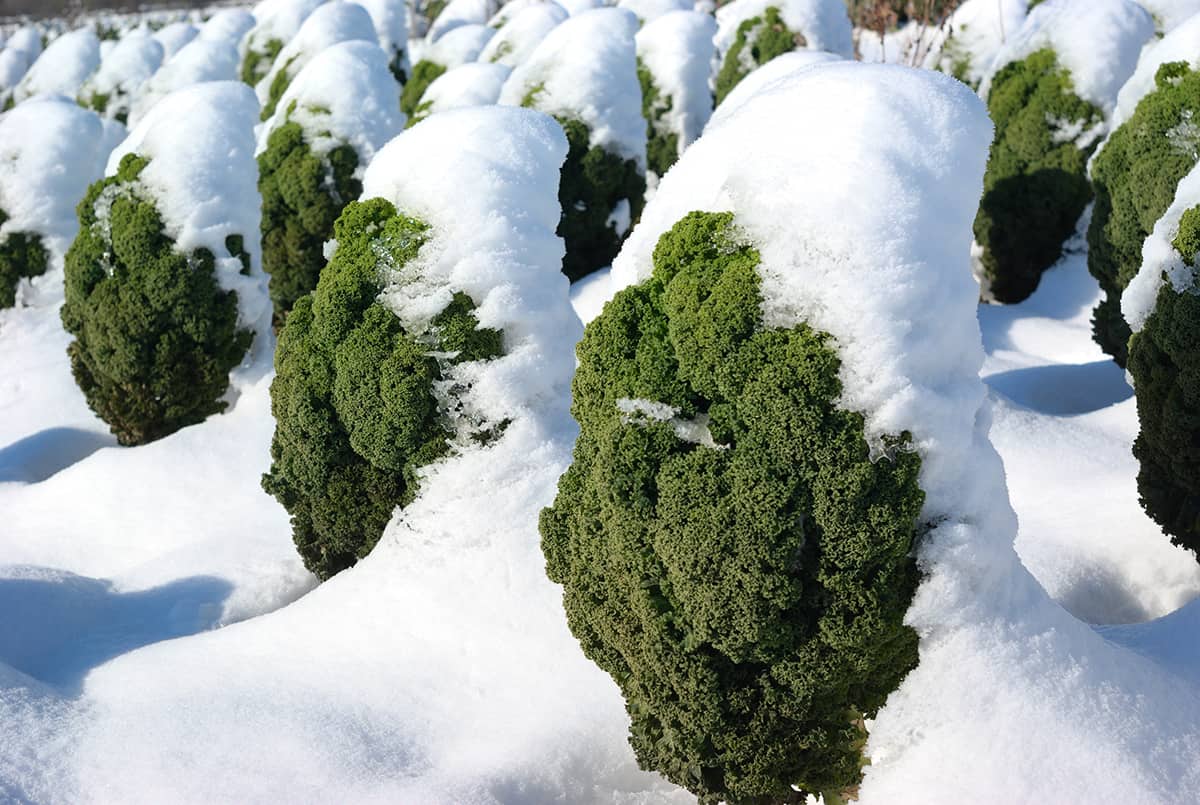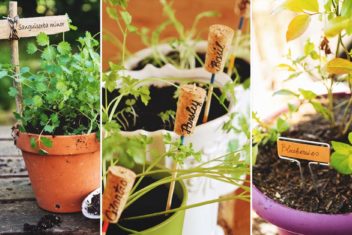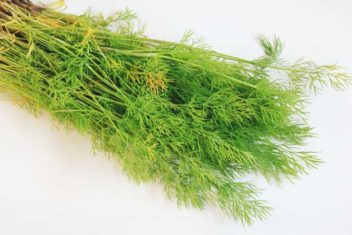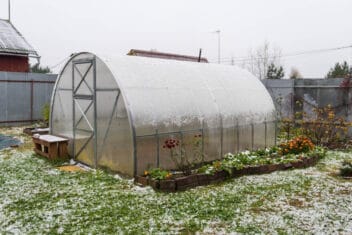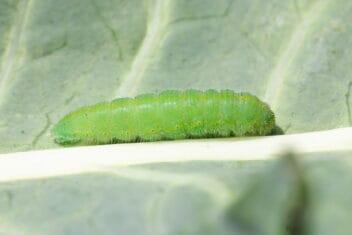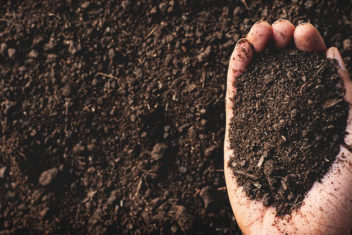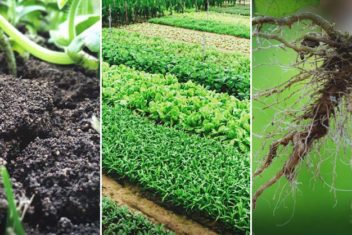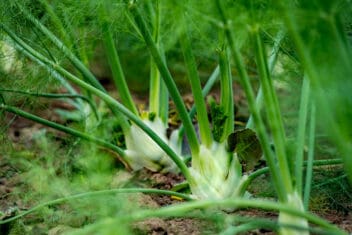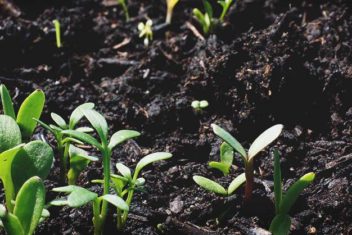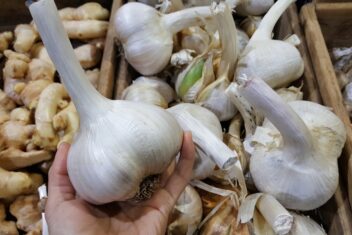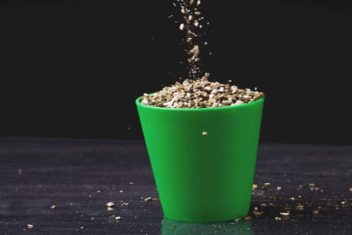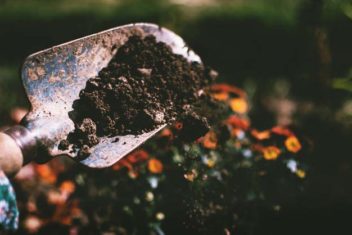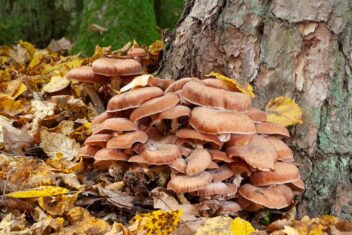Growing food in a cooler climate can be really frustrating because of the ridiculously short growing period. As a result, we need to take full advantage of the time and resources available to us.
One of the best ways to ensure that we’ll be able to grow enough food is to choose short-season crops. Here are some of the best options.
Choose Short-Season Species, Such as Varieties that Mature Quickly
When you look at seed packets (or their online descriptions), you’ll see a line that tells you how many days it takes for the plant to reach full maturity.
This gives you the approximate number of days it’ll take from the time you plant the seed to when you can harvest your food.
If you live in a zone that has a super-short growing season, do some research to find out your area’s first and last frost dates. Then cross-reference that with how many days are needed for different veg to mature.
The following 14 short-season crops are some of the best for cold climates. They mature quickly, withstand cooler temperatures, and offer some of the best yields.
1. Radishes

Little French radishes mature in 25–30 days, making them ideal for multiple harvests. They’re also great dual-purpose plants since you can eat the greens as well as the roots. Sow these as soon as the ground thaws, and keep sowing successively throughout the growing season.
Since these are cool-weather crops, they’ll fare better in spring and fall. If you do grow them over the summer, cultivate them in spots that get partial shade. Additionally, smaller varieties such as Hailstone radishes are perfect for container gardens!
2. Climbing Beans and Peas
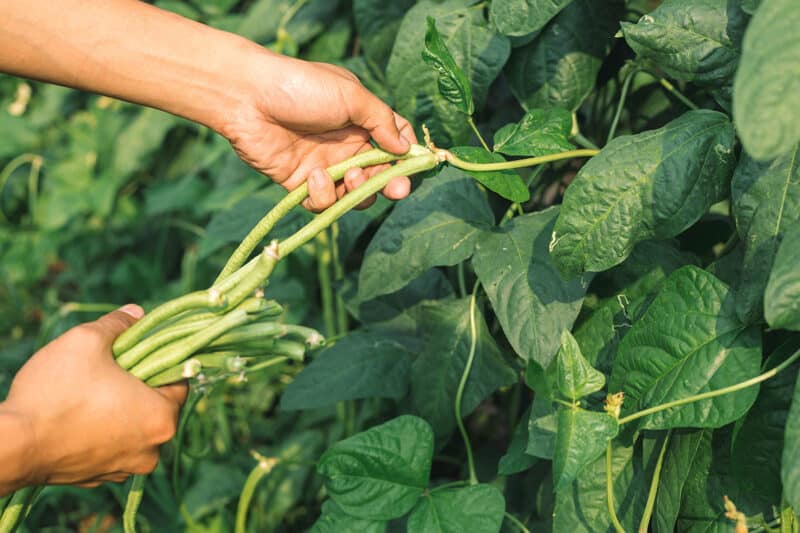
These legumes are some of the best short-season crops you can cultivate. On average, they mature in about 55 days, depending on the variety you’re growing. Larger ones like lima or broad beans take longer than tiny heirloom peas, of course, but they’ll all mature within a couple of months at most.
Best of all, since beans and peas can thrive in partial shade, you have a ton of options for planting these around your space. I’ve trained pole beans and peas around trees, on mesh attached to the side of my house, and on string lattices around a gazebo. Take advantage of every inch of space you have!
3. Spinach

If you love leafy greens, be sure to add spinach to your list. This species bolts in hot weather, so you’ll need to grow it either in early spring, or early fall. Sow the seeds about a month before the last frost date for the first crop and then a month before the first frost date in autumn for the next batch.
For tender “baby” spinach greens, harvest as soon as the leaves are around 2″. Otherwise, allow them to mature to about 5-6″, and cook them well to tenderize them.
4. Cucumbers
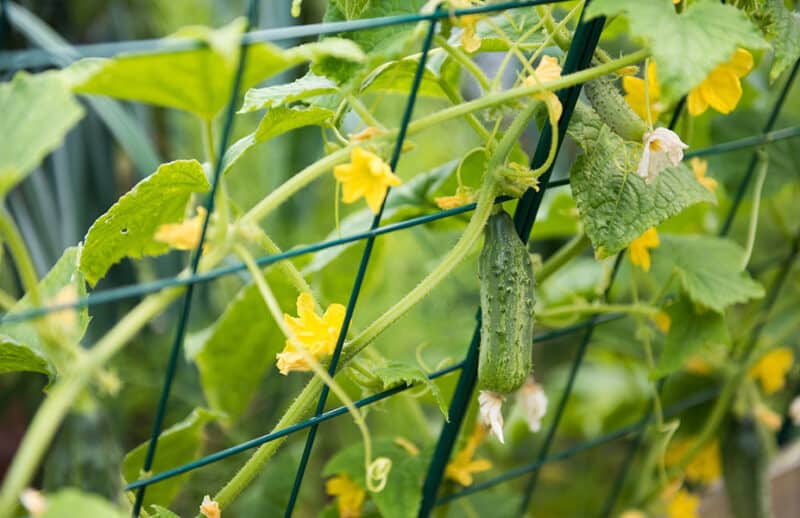
Smaller varieties take about 50 days, while larger ones will mature in around 65 to 70. They’re heavy feeders, so make sure to work plenty of well-aged compost into their rich, dark soil. Then feed them generously throughout their growing season.
Try growing little lemon or Dragon’s Egg cucumbers to eat fresh and heirloom pickling cucumbers for preserves.
5. Small Tomatoes
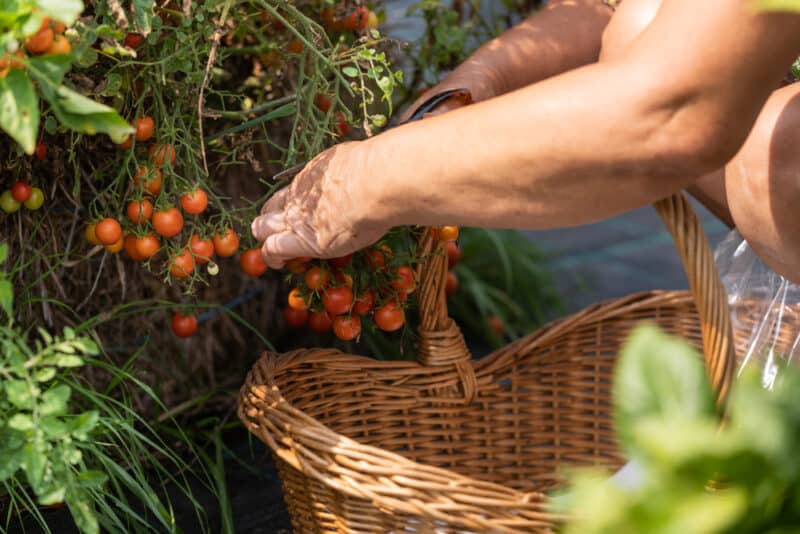
We know that large tomatoes take an entire season to grow to maturity. That said, you don’t have to give up on tomato love if you’re in a colder climate! Tiny cherry, grape, currant, and other micro tomatoes mature in 60-70 days!
This allows them plenty of time to grow to maturity. Sow yours either right in the ground or containers. The best time to plant them will depend on your area’s sun and heat exposure. For example, my front yard is hottest and sunniest in July and August, so I start my seeds around June 15th.
6. Carrots

If you love root vegetables, be sure to add carrots to your short-season list. Smaller varieties like Little Finger and Parisienne will be ready to pull up in 60-65 days. Longer varieties will take 70 to 80, but will still grow to maturity within your growing period.
These short-season crops are better in colder seasons than hot ones. Grow a batch or two in the spring, and again in the fall. If you grow them in the summertime, they’re likely to get woody and bolt.
In contrast, those grown when days are warm and nights are cool are sweeter and crunchier.
7. Zucchini/Summer Squash

The average zukes will usually mature in about 40–60 days, depending on the variety. It might also take over your entire garden, thus requiring you to foist your squashes off to your friends, neighbors, and extended family.
If you have a super short growing season, aim for small summer squash varieties. Patty-pan, scallop, and dwarf varieties will all produce prolifically.
Just provide these heavy feeders with plenty of nourishment and sunshine, and you’ll be gnawing on them for months.
8. Peppers

Peppers can take 50–85 days, depending on the variety. Like most other species, smaller hot varieties mature more quickly than larger ones.
If you’re aiming for hot peppers, try tiny Blue Filius or Kaleguritsa. You can grow these in containers or window boxes, and they’ll provide you with plenty of heat for your pickles, curries, and more.
Alternatively, if you prefer sweeter peppers, try miniature varieties. For larger, quick-growing varieties, aim for Lilac Bell or King of the North.
9. Kale
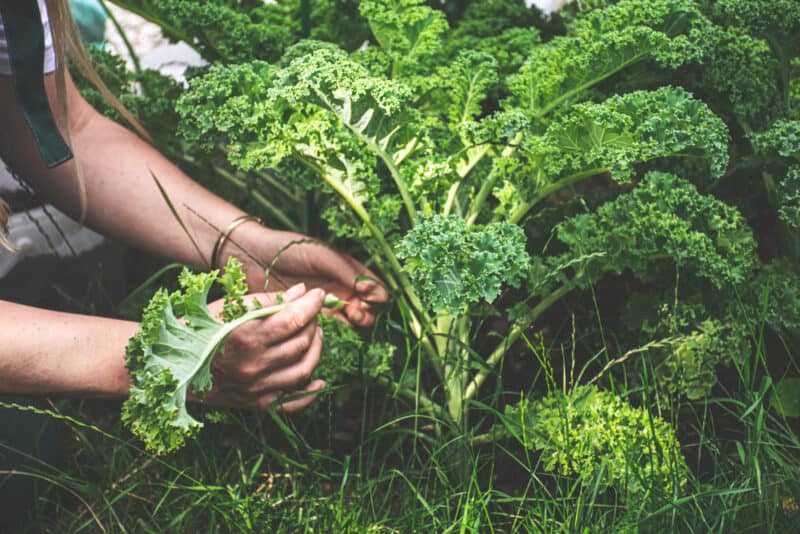
Most kale varieties mature fully in about 55 days, though you can also pick them early for baby salad greens. You can sow it a month before your last frost date and grow it right up until you’re digging it out from beneath a foot of snow. In fact, it’s usually sweeter and more tender after a frost or two!
Here’s a tip: If you’re aiming to feed a lot of people with your garden endeavors, plant Thousandhead Kale. This variety grows into leaves that grow over three feet long! Do you know how many kale chips you can make from that? Yeah, a lot.
10. Beets
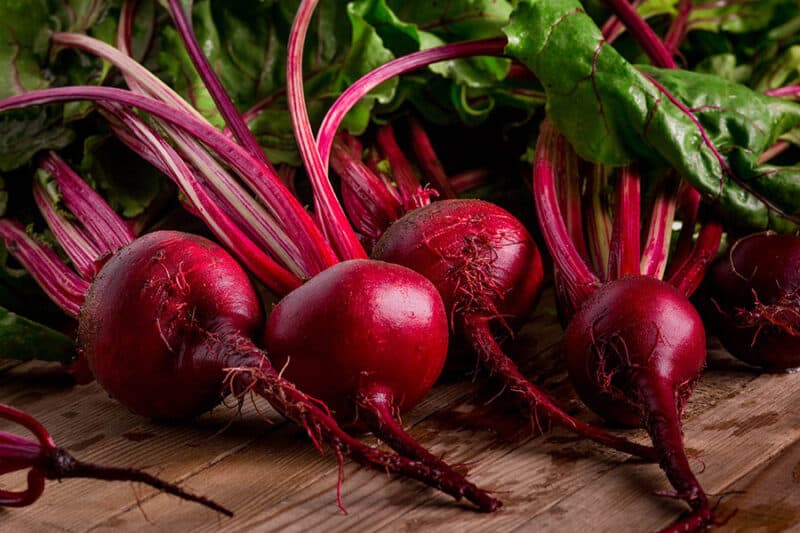
You can sow beets as soon as the soil is workable, which is usually just before the last frost date.
Most varieties will mature in 50 to 60 days so you can sow successively from early spring to late autumn. These are great dual-purpose short-season crops, as you can eat their greens as well as their roots!
Be sure to plant extras so you can pickle them for your winter pantry and dehydrate some of them into crispy snacks too.
11. Eggplant
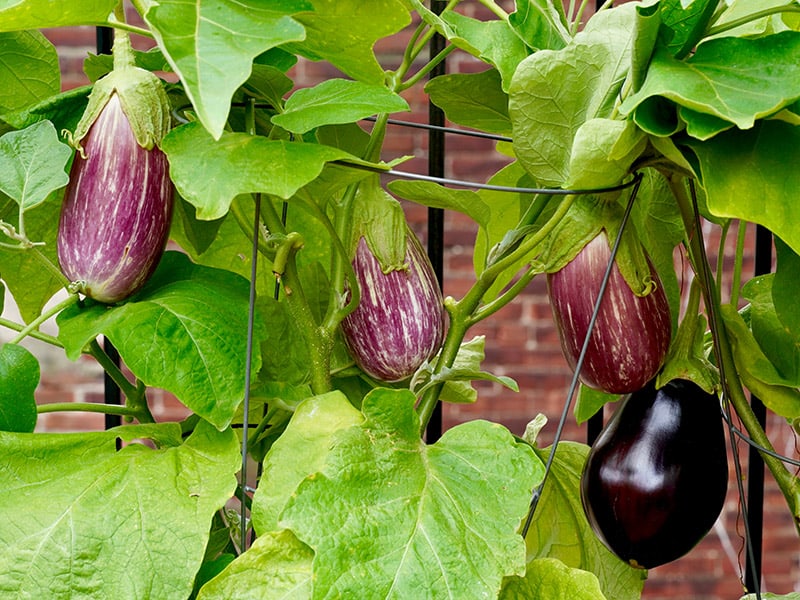
Eggplants mature within 60 to 90 days, depending on their variety. They’re heavy feeders that require a lot of sunshine, so they’re perfect for that sunny spot on your land. Since they mature so quickly, you can depend on them to produce a strong crop for you when grown at the height of summer.
If you’re in a cold climate, start your seeds indoors early. Aim for the seedlings to be at least 6″ when you transplant them outside. You’ll want these plants to get as much summer heat and sunshine as possible. Plant mid to late June for a late August harvest, and you should be good to go.
12. Cabbage
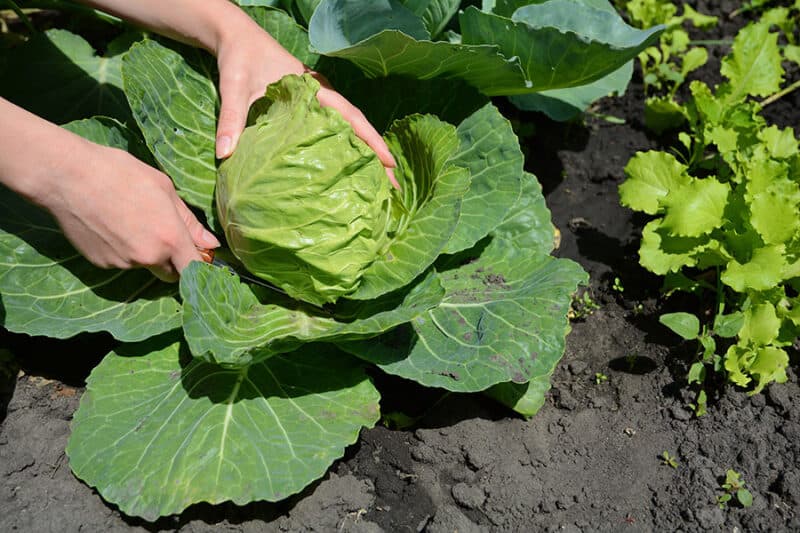
Cabbages, like kale, can be sown before the last frost date. This extends their growing season significantly, which is great for larger varieties.
That said, even the biggest cabbages, like the Late Flat Dutch variety, should mature within 100 days. This should allow them more than enough time to grow to maturity.
If you live in a climate like ours, where spring and autumn are cool but midsummer is blazing hot, then grow your cabbages and kales in early spring, and fall. They don’t thrive well in summer’s heat and will bolt if they get too much sunshine and boiling temperatures.
13. Potatoes
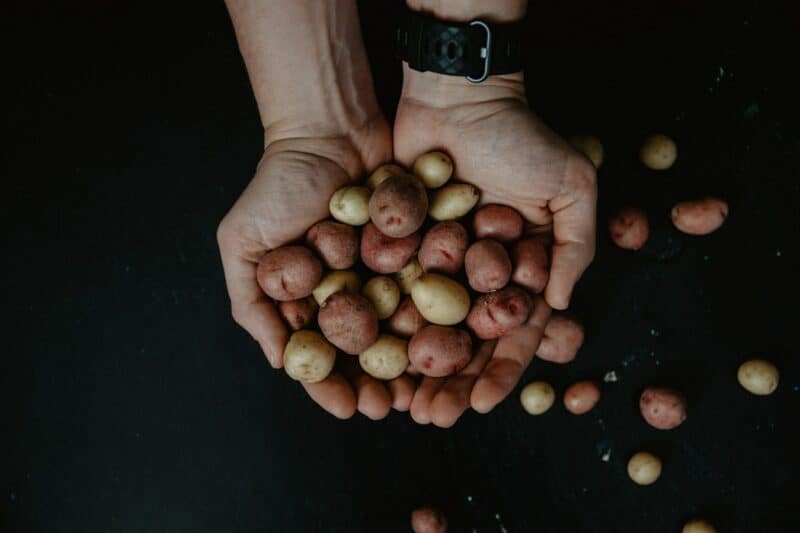
While full-sized potatoes take at least 90 to 120 days to mature, new potatoes only take about 70. These are also referred to as “fingerlings” and are sweet, tender, and absolutely magnificent.
If you have a super-short growing season, be sure to add some of these to your growing list. In fact, grow as many as you can in barrels, baskets, etc., so you can store plenty in the cellar as well as eating them fresh.
14. Lettuce
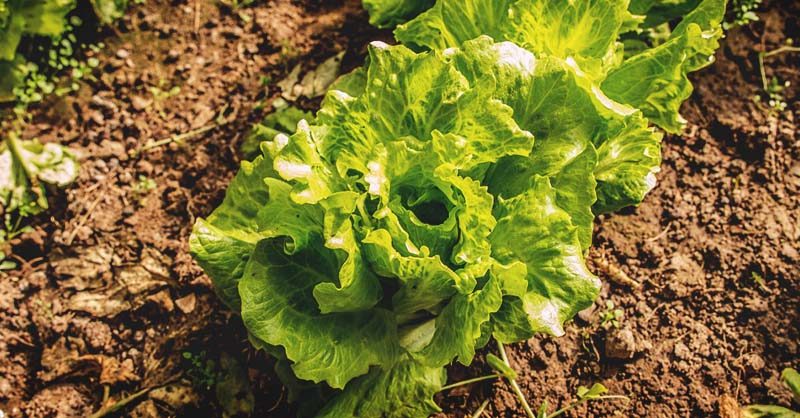
Last but not least, lettuces are some of the fast-growing greens out there. You’re looking at 40-65 days to full maturity, but you can use cut-and-come-again varieties as baby greens.
Lettuces thrive in cool, somewhat shaded situations. This makes them perfect for early spring and late summer/early autumn gardens. Like kale and cabbage, they’ll bolt if you try to grow them in the heat. You can also grow yours on the shady side of your property or along the tree line.
Species that Tolerate Frost are Great Too!
When choosing plants that have a relatively short growing season, make sure to select varieties that can survive (or even thrive) in cooler weather.
For example, those carrots and beets can taste even sweeter after being exposed to frost. We also mentioned kale and cabbage, which get far more delicious after cold weather has kissed them.

Just about every member of the cabbage (Brassicaceae) family withstands cold really well and sweetens with exposure to it.
Start Short-Season Crops Early
Most seeds take at least 6 weeks to germinate and mature into healthy seedlings. Take a look at your region’s last frost date, and work back 6 weeks to estimate when to start your seeds.
Set up a little growing system indoors that’s safe from pets and small children. Make sure you have well-draining seed-starting soil, a full range of indoor grow lights
You can start seedlings a little bit earlier, and cultivate different vegetables and herbs later into late autumn and early winter with the help of cold frames and greenhouses.
Consider Growing Indoors Too!
If you live somewhere like Alaska or Iceland, where the growing season is super short, consider an indoor garden. If you have a spare room or extra basement space, use the setup you created to start your seeds to grow short-season crops to full maturity year-round.
You could even set up an indoor hydroponic system if you’re feeling adventurous.
Alternatively, you can grow a ton of edible and medicinal plants around the house. Hang lettuce ball planters like decorative plants. Create string trellises in sunny windows and train beans and peas up them.
Or make a living herb wall in your kitchen, and have pots of arugula, kale, etc. on your bedroom window ledges.
Just make sure that the edibles you’re growing indoors aren’t toxic to any companion animals that may chew on them.
